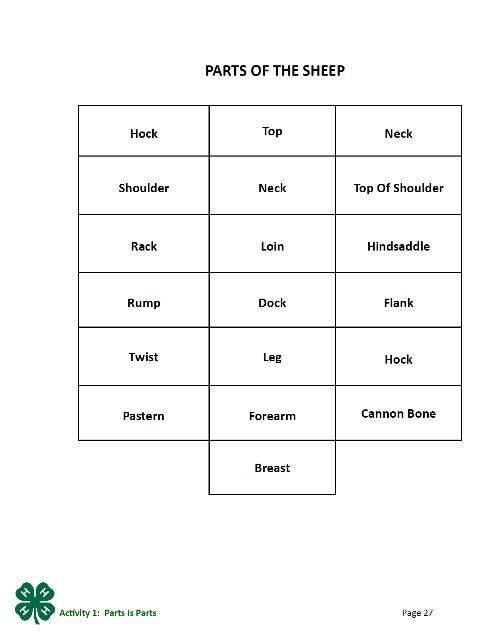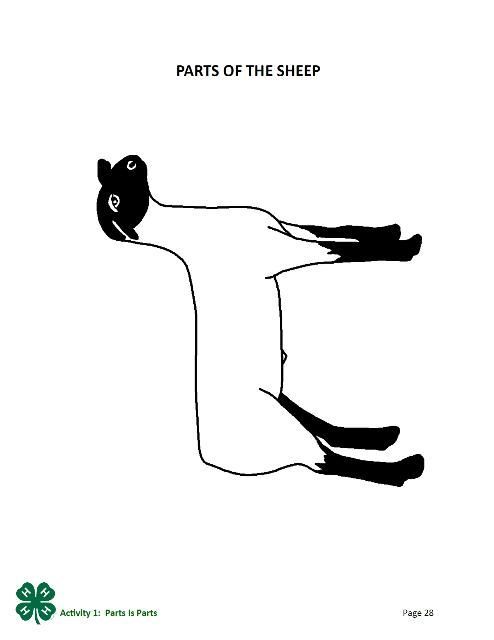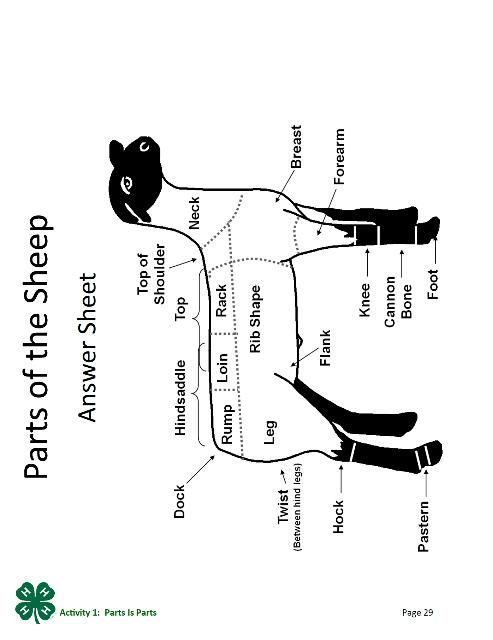This document is an educational guide. It serves as a curriculum resource within the Florida 4-H program, specifically designed for teaching livestock judging to young people aged 11-18. The guide emphasizes the development of various life skills through judging activities, such as communication, decision making, and organizational skills, while also aiming to boost confidence and self-esteem among participants. The document is intended for 4-H leaders and coaches, providing encouragement and guidance for those who may lack extensive background knowledge in animal science. It highlights the importance of animal science within the Florida 4-H educational framework and underscores the positive impact of livestock judging programs on youth development. The guide also aims to reassure and support potential leaders, emphasizing that successful programs can be led effectively without requiring advanced subject matter expertise. Original publication date November 1992

Activity 1 Sidebar
Sidebar.
Introduction
Adequate knowledge of live animal body parts is essential to the evaluation of livestock and participation in the livestock industry. Much of what you will learn about judging relies on this basic knowledge. Some body parts have the same name and location on cattle, swine, and sheep. Other parts indicate a similar location on each of the species, but have differing terminology for each (e.g. quarter, ham, leg), while others are species specific (e.g. snout, dock). Still, other parts are called species specific parts and are only found on one of the spe-cies (e.g. snout). Today we are going to identify the body parts, and learn about the terminol-ogy and functions of those parts.
DO Parts is Parts Relay
- Divide the youth into two teams and have them form two lines.
- Place the two blank outlines of the beef animal on the wall at the front of the room. Be sure to allow about ten feet between the two outlines.
- The object of the game is to see which team can correctly place all parts of the animal in the shortest amount of time.
- Place one adult at the front of each line. Have them give one body piece to each youth as they approach the front of the line.
- Have a referee by the outlines, if a part is placed incorrectly, it should be removed and the youth should find the correct spot.
- When they find the correct place on the animal for their part, they may go to the back of the line.
- Replay the game using a different animal until all 3 have been used.
- Divide the youth into groups of four.
- Hand out blank animal sheets, one of each species, and pens/pencils to each youth.
- Have youth fill in the correct parts of each animal species as a group.
- Have youth compare their sheets with the animal outlines. Allow youth to correct any mistakes.
Background Basics...
All animal body parts have a specific function and are in some way necessary for the daily survival of that animal. There are parts for locomotion, support, sensory, reproduction, and digestion.
Parts for locomotion purposes are generally found in the lower leg of the animal. Muscles and bones work together to provide movement. Some of the common bones/joints include the pastern, hock, and knee; some of the muscle groups include the forearm, shoulder, and stifle regions.
Support parts are muscle groups that support the locomotive parts and do not require as much active muscle movement. Examples of support muscles are the loin and rib. Since these parts do not require active movement, they have less connective tissue and ligaments, and therefore provide more tender retail cuts.
Sensory parts are the easiest for the beginner to learn, as they are very similar in type and function to our own. They include the ears, eyes, and nose (snout or muzzle).
Reproductive parts are different for each species and sex. This will be discussed more in Activity 2, but some of the reproductive parts are the teats, testicles, and vulva.
Most parts used for digestion are found inside of the animal, however, the mouth, throat, and anus are visible parts that are used in digestion.
Reflect
What body parts did you have difficulty remembering?
- Did you use memory association (mnemonics) to help you remember certain parts? (e.g. pastern is past the knee)
- What parts have a similar name and location on all three species?
loin, cannon, knee, hock, pastern
- Why is it important to identify the body parts?
The knowledge of body parts is an important foundation of knowledge to build on within the livestock industry and judging events. This knowledge can be used to communicate with others, evaluate animals, and understand how animal parts are put together in the live animal.
Apply
- What is the purpose of differing terminology across the species?
People involved with each species have developed terminology which is specific to the parts use and essential to traditional communication.
- What body parts in each of the species are used for locomotion purposes?
Lower leg muscles and bones are the primary parts involved in locomotion.
- For support purposes?
The loin, ribs, and flank are just a few of the parts that are involved in supporting the loco-motion parts.
- What animal parts are the same for humans?
Examples: sensory parts (eyes, ears, tongue)
Parts of the Beef Animal


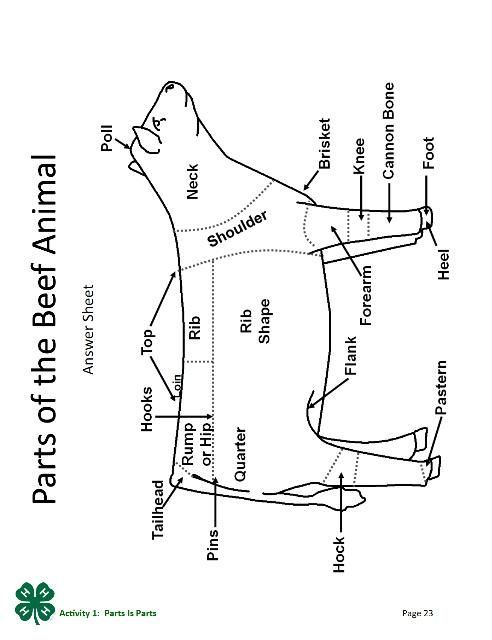
Parts of the Hog

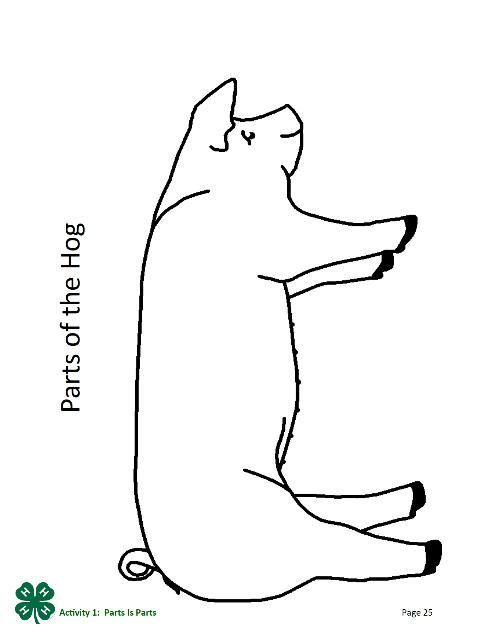
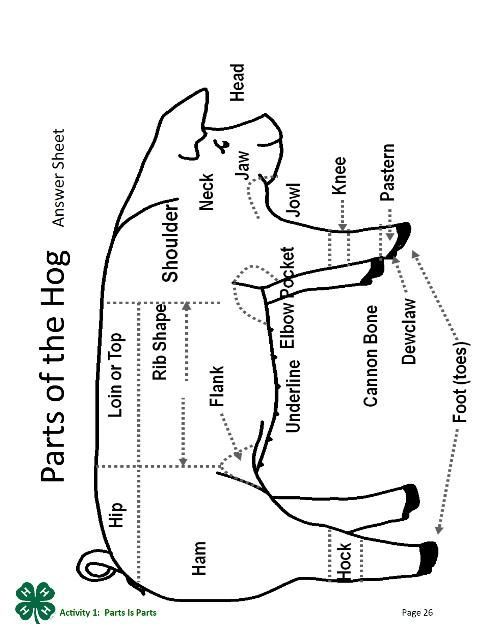
Parts of the Sheep
